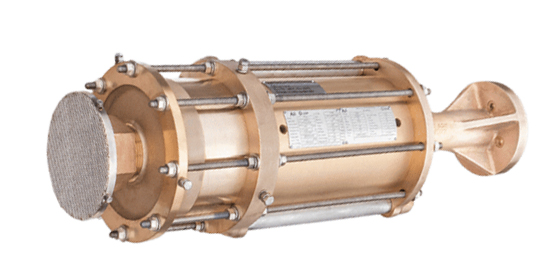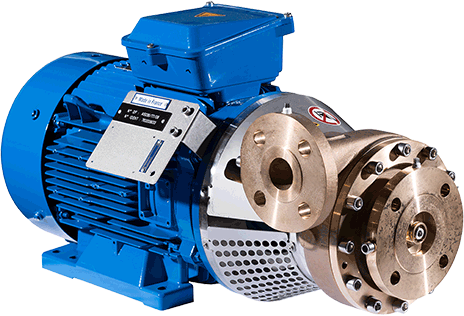Cryogenic pumps are an essential tool for carrying out processes that involve industrial gases in their pure state or in mixed form. The energy savings, small size, ease of maintenance and absence of contamination in cryogenic pumps make them the best choice for any industrial cryogenic challenge.
The importance of cryogenic pump maintenance
To make profitable and optimise the different uses of cryogenic pumps, they must be correctly maintained and supported by experts. Failure to do so may result in poor motor performance or poor insulation, leading to more frequent maintenance, repeated part replacements and consequent reduced service life.
Poor cryogenic maintenance therefore leads to excessive repair costs, poor performance and even potential plant shutdown. For all these reasons, exhaustive control of factors such as temperature, vibration, sound and the pressure level of the pumps is extremely necessary.
From Cryospain’s experience, a series of tips is provided for the optimal maintenance of your cryogenic pumps.
Differences in cryogenic maintenance according to the type of pump
It is a basic principle to understand that there are different types of cryogenic pumps with different parts, connections and functionalities that must be taken into account when understanding, maintaining and handling them.
Submerged pump
When liquids need to be transported at low temperatures, it’s common to use cryogenic submerged pumps. It is easy to find them in the production and transport of liquid Nitrogen, liquid natural gas (LNG), liquid Helium, and liquid Oxygen.
One of their many uses is for ship to ship bunkering. Choosing the right system for bunkering can materialize into a substantial change in terms of efficiency and sustainability.

Centrifugal cryogenic pump
The cryogenic centrifugal pump (also called a receiver or generator), works by transforming the mechanical energy of an impeller or runner into the kinetic or pressure energy of the cryogenic liquid, expelling it to the outside using the centrifugal force generated.
This consists of an inductor that sends the fluid towards the runner, an impeller or runner formed by blades that, attached to the shaft, rotate within a circular casing, a surface layer of stainless materials that protect the other elements, a seal that prevents liquid seepage between the shaft and the casing and a bar with a circular section that transfers the power from the motor.

Cryogenic reciprocating pump
The reciprocating pump compresses the liquid using the movement of this element. It is volumetric and is used to move fluids at high pressure using the piston movement, which always dislodges the fluid volume equivalent to that which it occupies during its stroke.
It has a cold part that contains the piston and that aspirates and drives the liquid, a mechanical part that transforms the motor’s rotary movement into the reciprocating piston movement and an electric motor that transforms the pump’s discontinuous flow into continuous flow.

Differences in cryogenic pump maintenance
In addition to the cryogenic pumps described, the cryogenic pump specifications can be customised so that they are specifically adapted to the needs of each industry.
The specific maintenance guidelines and indications for each type of pump therefore vary according to its nature, composition and recurrence or type of use. Regarding the type of use, please bear in mind that the pumps can be process (which means that their use is continuous) or distribution (if they are used discontinuously).
Other factors to consider include, for example, are that insulation problems are an especially common setback in pumps with electric motors. In these cases, regular maintenance of the motors is required to avoid wear.
Many frequent breakdowns also have to do with undesired contact between phases, which may imply a specific insulation failure in cables or plugs and making it necessary to take the different parts involved in each pump into account.
The same as factors intrinsic to pumps, it is key to consider factors that are external to cryogenic plants and pumps. A good example is the environment; for plants near the sea, rust is especially problematic, as salty air accelerates corrosion. Therefore, each specific maintenance case must be assessed and treated individually.
Read more: Cryogenic systems and how they’re revolutionizing almost every industry
Tips for good cryogenic pump maintenance
1. Types of maintenance; how often to carry them out?
A good cryogenic maintenance policy is based on conservation, revision and repair tasks. The transition from corrective maintenance, focused on correcting defects and resolving failures once the problem occurs, towards a preventive maintenance approach focused on anticipating problems and breakdowns, has gained ground with the aim of achieving cryogenic maintenance that is more reliable, traceable and cost-effective in the long term.
It is therefore important to use technology and diagnostic equipment to carry out automated daily reviews that draw up a predictive maintenance strategy to collect and analyse information that enables the correct time and place to carry out maintenance tasks to be determined.
Drawing up a good preventive and predictive maintenance plan reveals failure patterns and minimises the effect of potential breakdowns on the productivity of cryogenic pumps. This plan must always be supported by a maintenance routine in use, carried out by the same operator who cleans, visually inspects and lubricates the cryogenic pumps.
In addition to establishing a daily maintenance plan based on data, it is important that the pertinent official reviews are carried out by experts with the frequency specified by each manufacturer in question and pursuant to current regulations (half-yearly, yearly, etc.) adapting to each customer’s needs as far as possible.
2. Processes and products involved
Maintenance tasks must be able to be carried out on site for centrifugal and piston pumps. They require top-of-the-line equipment and facilities and occasionally, comprehensive motor insulation checks will be necessary through tests such as the megohmmeter.
Other processes for diagnosing and maintaining cryogenic pumps include reviewing and analysing cryogenic equipment, pressure tests, helium tightness tests, repairing systems that do not comply with their performance, vacuum recovery or
perlite filling.
For the different conservation tests, tools such as a digital instrumentation diagnosis, analysis and information about processes, ultrasound, oil controls, fugitive emissions, vibration controls, thermography and current, falling of rods, diagnosing control valves and motor isolation tests, among others, are used.
3. Expert pump maintenance team
Investing in technology and equipment is meaningless or useless without a team of qualified, certified cryogenic maintenance technicians with great analytical and problem-solving capabilities.
Cryospain maintains that professionalism and a vocation for service offer the best value for customers and continuous training in new processes and technologies is the key to obtaining the highest level of specialisation in cryogenic facilities and machinery.
To make cryogenic plants work on wheels, it is necessary to understand the individual needs of each use of cryogenic pumps and to offer a comprehensive service adapted to each requirement, always within the highest quality standards.
You might be interested in: How do You choose the perfect cryogenic equipment manufacturer?
Constant cryogenic pump monitoring with Cryospain
Cryospain has a workshop with a clean room dedicated exclusively to repairing and maintaining cryogenic pumps. The company’s team of professionals and technical resources can be used by customers at Cryospain’s facilities or in the customer’s own facilities.
In order to minimise response time, an extensive range of parts for centrifugal and piston cryogenic pumps is always maintained in stock. Each case is studied as unique, providing a comprehensive cryogenic engineering service. Contact us to receive a study of yours!











 Contacte-nos
Contacte-nos